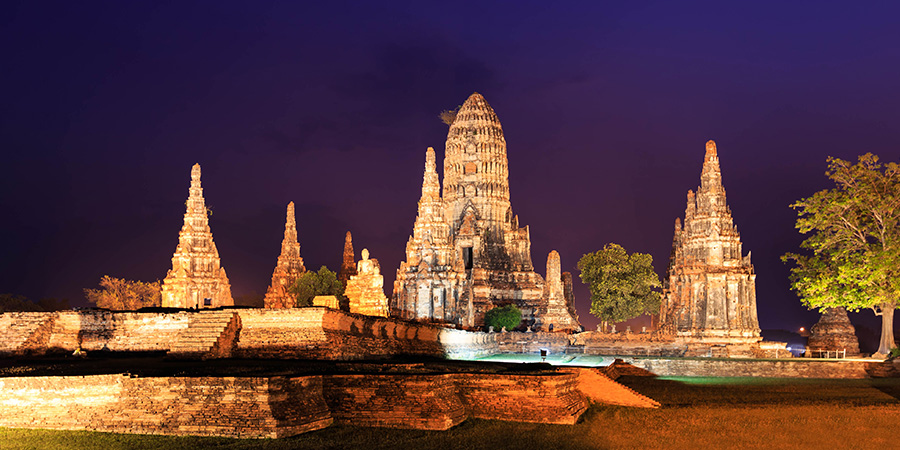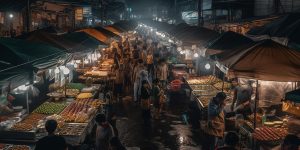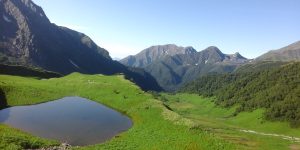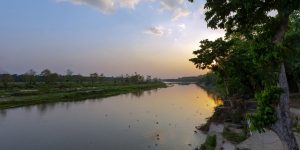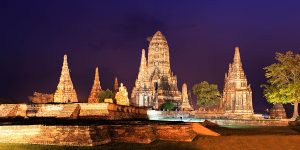When most Nepalis think of Myanmar, they think of Buddhism, Aung San Suu Kyi and the Rohingya crisis. Very few are aware that there is a sizeable population of Nepali-speaking Burmese living in Myanmar. I had met a few Nepali Burmese in Thailand when I travelled there in 2012, but remained largely ignorant of their historical connection to Nepal. My recent work trip to Myanmar allowed me to interact with several Nepali Burmese and learn about their history, culture, and identity. I was also able to explore the country as a tourist and assess its potential as a tourist destination for Nepalis.
The Nepali Burmese
As luck would have it, the manager of the hotel we were staying at in Yangon happened to be Burmese Nepali. Devraj was a fourth generation Burmese Nepali whose ancestors came to Myanmar as part of a Gurkha regiment during World War II. Devraj spoke fluent Nepali s dotted with Hindi words in a manner akin to Nepalis who have lived in India for a long time. Over the two weeks we stayed at his hotel, Devraj became an invaluable resource for me and my colleagues to learn about Myanmar and Nepali Burmese in particular. There are some 300,000 Burmese Nepalis living in Myanmar whose ancestors arrived in the country as early as in the 1820s when Myanmar (then Burma) was part of the East India Company. Many more came to Myanmar during World War II as part of the British Indian Gurkha regiment who fought the Japanese army for Burmese independence. The Gurkhas have won many accolades and the highest awards for bravery in Myanmar. A symbol of this recognition is the commemorative plaque that stands tall in Mandalay Hill, a popular tourist destination.
During our time in Myanmar, the Nepali Burmese community in Yangon invited us to Shree Ramnawami celebrations, one of the biggest festivals for Nepali Burmese along with Dashain. While we were unable to join the festivities due to our tight schedule, I have held onto the invitation card as a beautiful keepsake and a reminder of the warm hospitality of the Nepali Burmese community who retain many cultural similarities with Nepal.
Exploring Myanmar
After completing our assignment in Myanmar, me and my colleagues explored Myanmar as tourists and our experience was worth every kyat we spent in the country. After completing its political transition in 2011, Myanmar is now fully open to tourists–a fact we reaped full benefits of. Besides Yangon, we visited Bagan–an ancient town with over 2,200 temples, Mandalay–the second largest city in the country, Ngyapali (Thandwe)–a small beach town, and Nyapidaw–the capital city. Traveling across the country allowed us to experience Myanmar’s diverse offerings and ensured that we were able to make the most out of our trip. Some highlights from our trip were:
Domestic Flights. On our flight from Yangon to Bagan, our aircraft landed in two other domestic airports to pick up and drop passengers, before reaching our destination. After dropping us at Bagan, the same aircraft continued toward a fourth destination. I would not recommended such flights for people who have a phobia of flying; the experience was similar to riding a public vehicle with multiple transits. The experience, however, made me wonder whether we do something similar in Nepal to decrease the cost of air transportation.
Positive Energy and Spirituality. Myanmar is truly spiritual, which can be felt especially at the many pagodas and temples throughout the country. The country offers unique spiritual experience for Buddhists and non-Buddhists alike. Myanmar’s temples and pagodas are mostly run through donations and contributions from locals, as donating to places of worship is a common practice in Myanmar. In fact we learnt that rich families often take responsibility of specific temples, hence some temples are better maintained than others. People reading holy books in shops or playing Buddhist chants is a common practice across Myanmar, and don’t be surprised if you get to listen to one at the airport. If you are into meditation, you can join one of the many mediation centers the country has to offer.
The Grand Shwedagon Pagoda. Situated in the heart of Yangon, the Grand Shwedagon Pagoda, is a masterpiece decorated with jewels and plated with gold. Myanmar has built a replica of Shwedagon in Lumbini as well. Shwedagon is considered to be a must-visit site for Buddhists. The smell of flowers and incense sticks creates an aura of positivity in the surrounding environment. The atmosphere around the temple is enchanting, with people sitting on the floor, chanting, meditating or simply enjoying their surroundings. On a lighter note, you can enjoy a free visit to the temple if you look Burmese, as did my colleague.
Majestic Bagan. The ancient city of Bagan is must-visit place while in Myanmar. The city has over 2200 monuments, temples and pagodas and is seen by many as equal in attraction to Angkor Wat in Cambodia. If you visit during October to Mid-April, you will be able to enjoy this majestic city on a hot air balloon, which could be an experience of a lifetime. Another easy way to explore the city is by renting a bike.
Simple Lifestyle. The core attraction of Myanmar are its people–very humble and always wearing a smile. People with ‘Thanaka’ (a yellowish white sandalwood paste) on their cheeks and wearing longyi (or lungi as it is known in our part of the world) is a very common site. Mostly worn by everyone from rich to a commoner, it’s common to see people from top executive to lower rank officials with a longyi and a simple sandal.
The Food. Local Burmese cuisine is simply amazing and suits the NepalI taste palate; a typical Burmese meal is centered around rice and includes curries, soups and condiments such as dipping sauce and raw vegetables. I would also highly recommend the popular breakfast dish Mohinga–rice noodles with fish soup, sprinkled with deep fried fritters. Most hotels offer dishes from the local cuisine, but nothing beats food at local eateries in terms of both price and taste.
Icing on the Cake. Besides its rich culture, delicious food and spirituality, Myanmar also offers beautiful and relatively untouched beaches. Ngyapali beach, just a half hour flight from Yangon, offers a beautiful beach experience with good resorts, beach activities and of course great seafood. Also, if you have time and money to splurge, exploring the pristine white-sand beaches at the bottom of Myanmar bordering the Andaman Sea could be a great getaway.
Apart from a few Buddhist pilgrims, Myanmar has not been able to attract many tourists from Nepal. My travels across the country, allowed me to recognize its potential as a tourist destination for Nepalis. If direct flights between Nepal and Myanmar start in the future, it will provide greater opportunity for Nepalis to explore Myanmar, while allowing Nepal to attract millions of Burmese Buddhist pilgrims to Lumbini.

